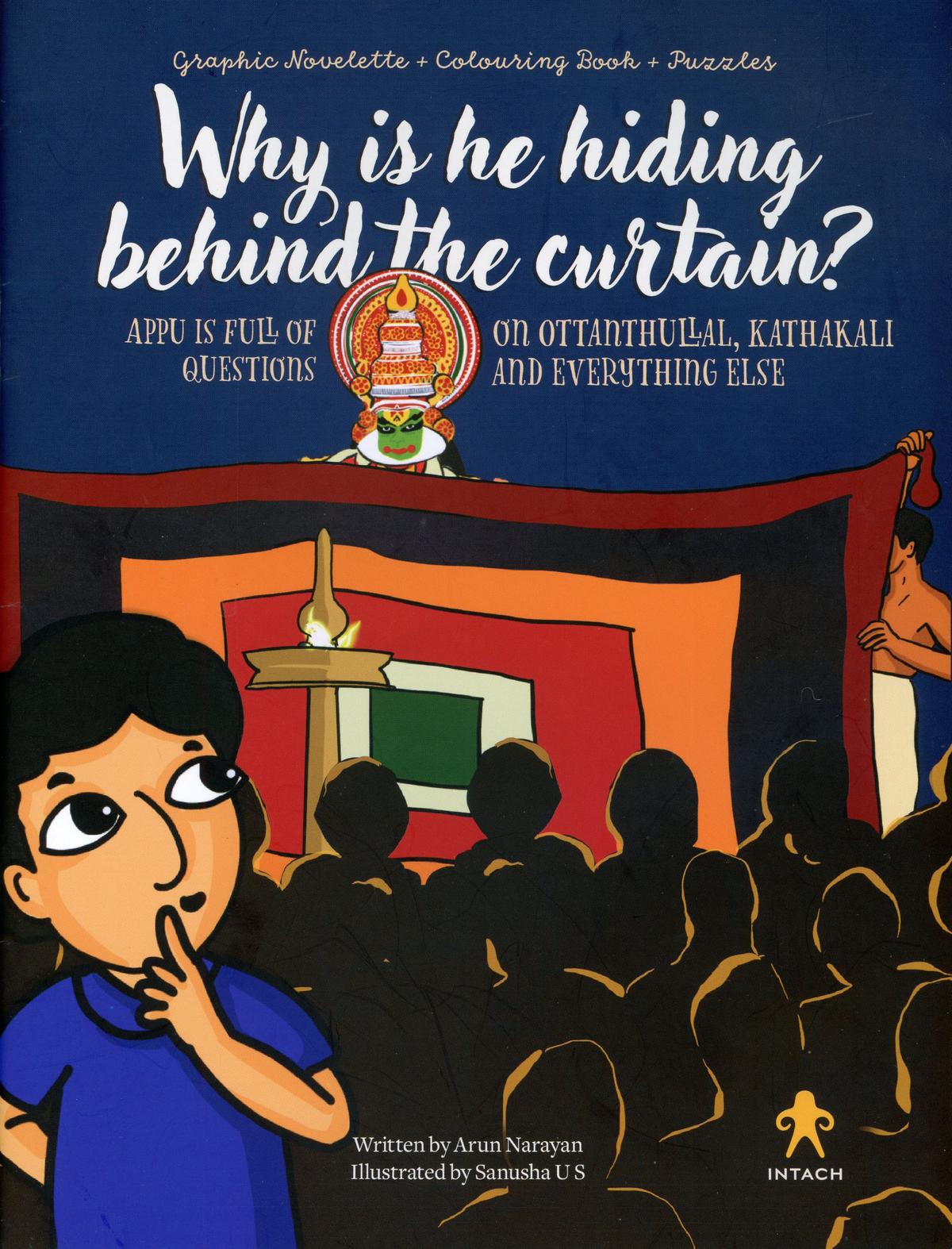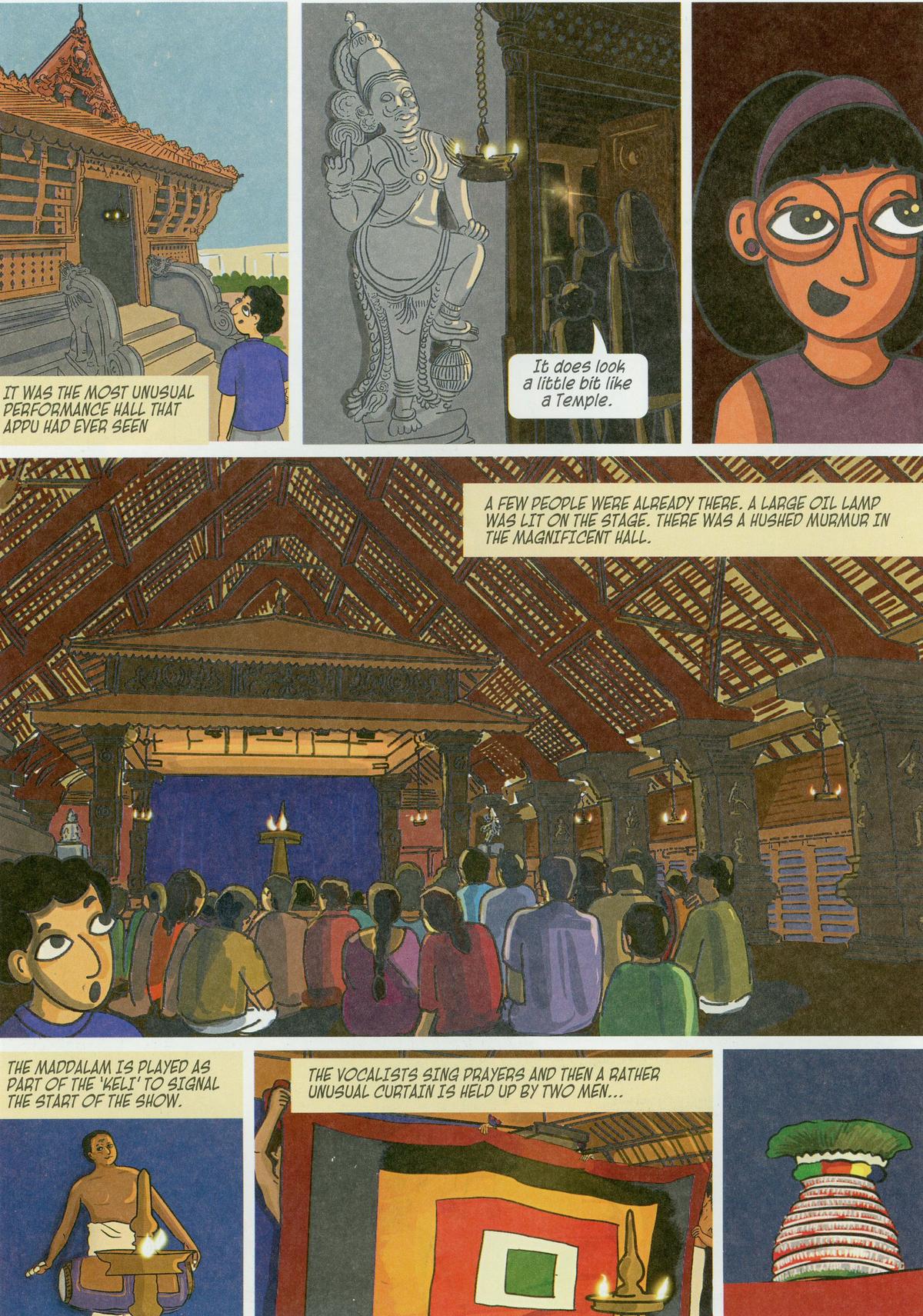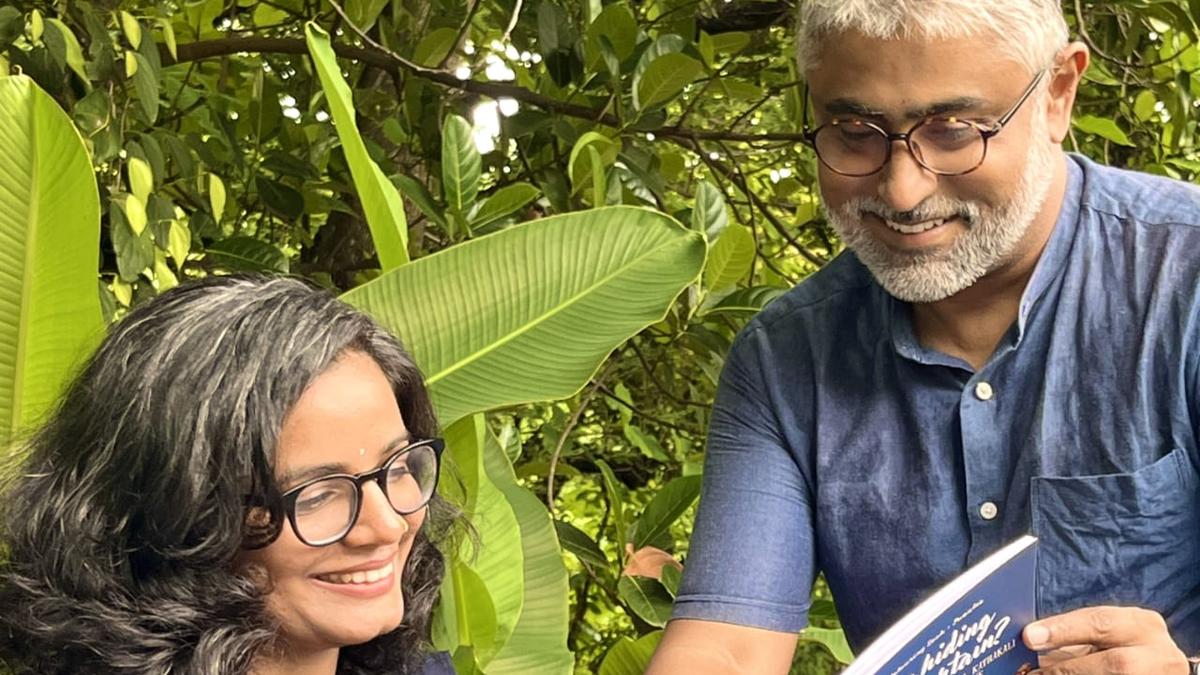Arun Narayan and Sanusha US, author and illustrator of graphic novelette Why is he hiding behind the curtain?
| Photo Credit: SPECIAL ARRANGEMENT
A colourful, rectangular piece of cloth held by two men is lowered slightly to reveal the mask-like face of the artiste on stage before it is pulled up again. The peekaboo game continues with tantalising glimpses of the actor while the percussion drums up excitement, building up anticipation for a Kathakali play about to be staged.
Explaining this interesting prelude to a Kathakali play is a slim graphic novelette, Why is he hiding behind the curtain?, which takes readers above the age of eight into the colourful artistic heritage of Ottanthullal and Kathakali, traditional performing arts of Kerala.
Written by Arun Narayan and illustrated by Sanusha US, the comic is a delightful introduction to the art forms, perhaps the first of its kind in Kerala, if not India.
Arun, convener of the Indian National Trust for Art and Cultural Heritage (INTACH), Palakkad chapter, says this kind of novelette has been on his mind since 2016. He happened to notice that the audience for traditional art forms mostly comprised senior citizens and there was a perceptible lack of youngsters who did not know and did not care to know about these art forms.
Sanusha, an architect, explains that initially, the plan was to bring out a graphic novelette on the lives of local heroes, art forms, names of places and so on. The pandemic forced them to take a break. Last year, a jewellery chain approached a design house Sanusha is associated with, to design activity pages or books for children that would keep them engaged when the elders shopped. “Instead, we came up with this idea of a graphic novelette that would also have activity pages for children to play, to colour and so on, all based around the story in the book,” elaborates Arun.
The result is a 32-page book — with more than 300 panels — that takes readers behind the stage to show up close the origins, training, make-up and staging of Kathakali plays. And there are activity pages too, for colouring, puzzles and so on.

Why is he hiding behind the curtain?, a graphic novelette on performing arts of Kerala.
| Photo Credit:
Special arrangement
The reader travels with Appu and his elder sister Anu when their parents take them to Kerala Kalamandalam to meet the artists, gurus and students of Kathakali. It also has a short narrative of the Kathakali play Kalyanasougandhikam, an excerpt from the Mahabharatha, in which Bhima encounters his half-brother Hanuman while searching for a flower that Draupadi wanted.
Arun and Sanusha remember that a workshop at a school in Bhimanad in Palakkad gave them an image of their protagonist Appu, full of questions about everything that he comes across.
“We met a teacher and her son. Her son had questions about all that we were doing. She told us that her son is perpetually inquisitive. Children, by nature, are inquisitive. Instead of silencing them, we should be encouraging that. That is why we chose to model Appu on that inquisitive child,” says Arun.
Both Arun and Sanusha reminisce about their fondness for comics which heightened their curiosity about heritage, history and so on. Arun admits that Amar Chitra Katha comics were his introduction to Indian mythology and history. Comica like Herge’s Tintin series triggered his interest in world affairs while the Asterix series eventually made him a history buff.
“Comics are a good way to introduce children to different subjects. Since there is hardly anything in that form about Kerala’s heritage, nature, folk stories etc, we decided to work on those lines to reach out to children,” explains Arun.

The illustrations have been rendered with attention to detail as can be seen from a page of the graphic novelette Why is he hiding behind the curtain?
| Photo Credit:
Special arrangement
The richly illustrated panels and detailed storyline give a clear picture of the art forms. “Children are exposed to several kinds of visuals. A flat pictorial depiction may not hold their attention. I have tried to add depth to the panels to enrich the pictures,” says Sanusha.
Pictures that show the Koothambalam, a place where performances were once held, have been painstakingly detailed to give it a 3-D effect and make it as close to the real building. So is the case with the different characters of Kathakali and its practice.
“The traditional art forms are complex and it took a lot of time to pare it down to the essentials to talk about it without losing the essence of the art,” points out Sanusha.
Each question that Appu asks during his trip to Kalamandalam and Killikurishimangalam is answered patiently by his parents and other elders he encounters. No one dismisses his questions or shushes him.
For instance, Appu wants to know why Ottanthullal artistes wear skirts. As Appu and Anu embark on their adventure in Why is he hiding behind the curtain, the answer is revealed.
The book has been published by Here and Then in association with INTACH; ₹299
Contact: 9873440216

